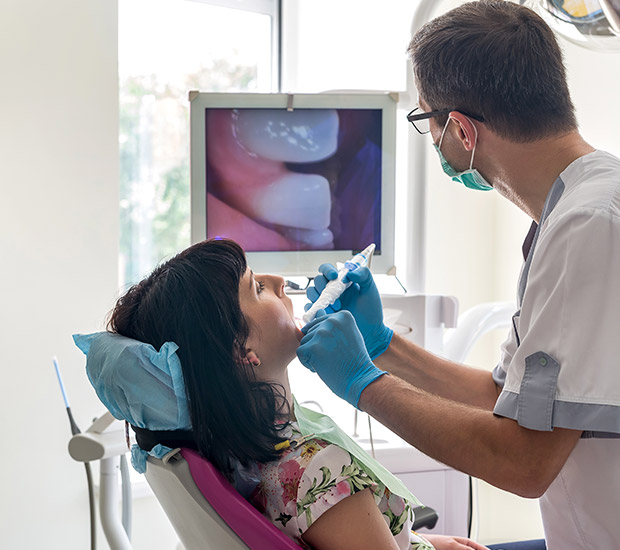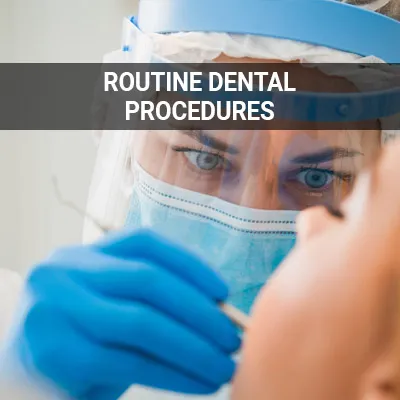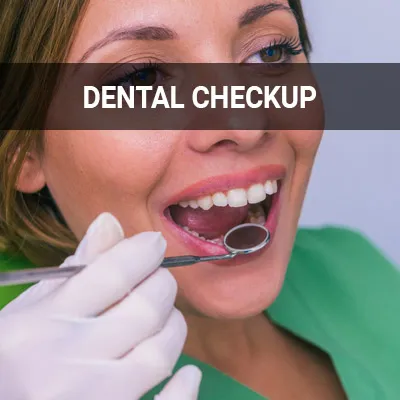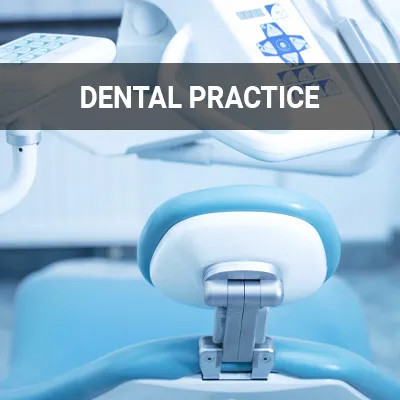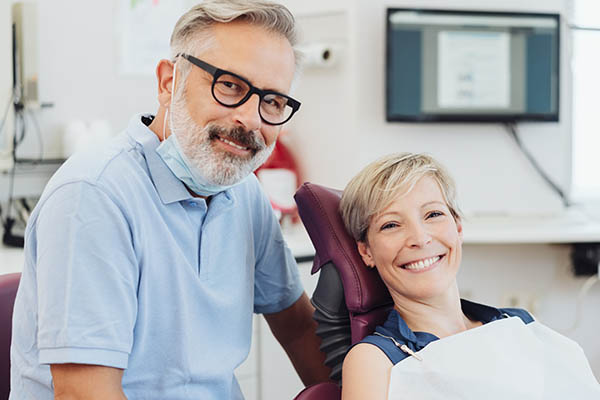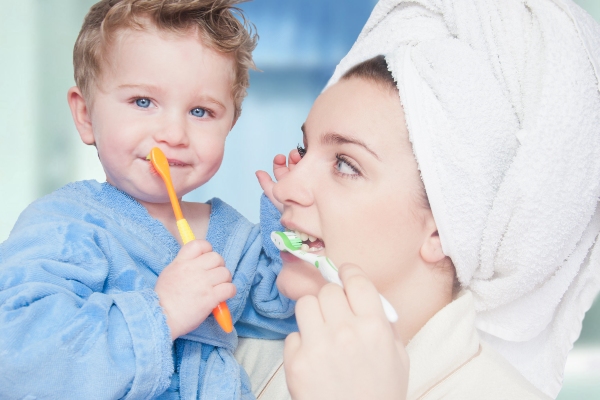Intraoral Photos Rosenberg, TX
Intraoral photos can be a helpful tool for dentists when diagnosing an oral health issue or working to educate a patient. An intraoral camera is a tiny digital camera used to capture the difficult-to-reach corners of the mouth. Its size is comparable to a pen, and it is wrapped in a disposable cover. The main goal of intraoral photos is to help the dentist assess and diagnose oral health problems.
Dental photos are an easy and non-invasive way to help keep your smile healthy. Intraoral photos are available at KRB Dentistry in Rosenberg and the surrounding area. Call us at (832) 361-3929 to schedule an appointment to learn more.
The History of Intraoral Cameras
The first intraoral camera was developed in 1987. These cameras were large, unwieldy, and pricey, at an average cost of about $40,000 per unit, and they consisted of a dental endoscope, a light scope, and a remote head micro camera. They required a handpiece, video processor, and dedicated computer to process the captured images and videos.
Today's intraoral camera systems are much more portable and easy to use. They have USB connectivity instead of a large docking station, making them lightweight and ergonomic. Many look just as conventional cameras do, and they can produce higher-quality images and videos that are readily available to view. As such, they have become so easy to use that they are quickly becoming a standard part of many dentists' operatories.
“Today’s intraoral camera systems are much more portable and easy to use.”
When an Intraoral Camera is Used
It is not easy to get a clear look at the teeth and gums. Even with special lights and mirrors, the dentist can only see so much. The intraoral camera allows both the patient and the dentist to see all the details of the mouth without pain from X-rays. The patient's involvement increases when they can see their oral conditions while the dentist is discussing them.
Dentists can use an intraoral camera during patients' appointments to help diagnose dental issues such as tooth decay and gum disease or to get a better look at any damage, such as a chipped tooth. After a procedure, intraoral photos are also useful to help track patient recovery. These photos can show the dentist if they are experiencing any complications.
“It is not easy to get a clear look at the teeth and gums.”
What an Intraoral Camera Can Reveal
An intraoral camera reveals parts of the mouth that can be difficult to see with the naked eye. Many dentists use it as an educational tool, allowing patients to see the inside of their mouth in a way they never have before. It can be shocking to see the condition of one's teeth for the first time.
Through the use of dental photos, patients can see the areas that are frequently missed during flossing and brushing as well as any signs of gum disease. This provides an opportunity for the dentist and the patient to have a conversation about the importance of preventative dental health. In addition, intraoral photos can help the dentist better explain any conditions a patient may have and how to manage them.
Photos and videos taken by the intraoral camera can also set a baseline for oral health conditions. Storing photos on file allows the dentist to compare them during future appointments. This allows them to better assess whether past dental treatments have made improvements to the patient's oral health. Dental photos allow us to easily monitor the progress of the patient's oral health.
“An intraoral camera reveals parts of the mouth that can be difficult to see with the naked eye.”
Check out what others are saying about our dental services on Yelp: Intraoral Photos in Rosenberg, TX
Intraoral Photos and Diagnosis
Even today, it is not uncommon for some dentists to diagnose certain conditions after an unassisted visual examination. Though these may sometimes suffice, a more in-depth inspection is occasionally necessary. Intraoral cameras allow dentists to take close-up photos of the teeth from angles that they could not otherwise see, facilitating the diagnosis process. This can even be true when a patient has undergone an X-ray, as certain conditions may be more apparent "in the flesh."
Taking dental photos regularly also allows dentists to establish a "baseline" for a patient's mouth. Any aberrations from these photos will then be more easily identifiable as potential causes for concern. Dental photos can also make visits more convenient for the patients, who may have otherwise needed to be subjected to hours of visual examination for a proper diagnosis.
“Intraoral cameras allow dentists to take close-up photos of the teeth from angles that they could not otherwise see, facilitating the diagnosis process.”
Questions Answered on This Page
Q. What is an intraoral camera?
Q. When an intraoral camera is used?
Q. What can an intraoral camera reveal?
People Also Ask
Q. What does the dentist look for in a dental examination?
Q. What should a home oral care routine include?
Frequently Asked Questions
Q. What is an intraoral camera?
A. An intraoral camera is a tool used to examine your mouth in a detailed way. It is shaped like a large pen and has a camera that takes photos and sometimes videos. It is a high-tech version of the dental mirror.
Q. Who would benefit from intraoral photos?
A. If you are the type of patient who needs to see visual evidence of a diagnosis, an intraoral camera will provide extra information. Dental photos help you to see exactly what the dentist is seeing. These detailed images can show where there is decay or a crack that needs repair, even if you are not experiencing any symptoms.
Q. Does an intraoral camera hurt?
A. This type of camera is very small and specifically designed to be used inside of your mouth. Images are captured quickly and comfortably. It is more comfortable than a lot of other dental equipment, which can sometimes trigger your gag reflex.
Q. What can an intraoral camera be used for?
A. An intraoral camera allows the dentist to see parts of the mouth that are otherwise hard to navigate with traditional tools. It can help screen for oral cancer as an educational tool and help the dentist identify areas of concern, from cracks in fillings to small fractures. Patients can also see any areas that they miss when brushing and flossing.
Q. How often are intraoral photos taken and used?
A. Intraoral photography is used by most dental practitioners. It is recommended to be taken once yearly to ensure proper diagnoses and progression of any patient's oral health status. You may request to take intraoral photos at your next appointment.
Dental Terminology
Call Us Today
Dental photography can help patients better understand their conditions and maintain their oral health. We at KRB Dentistry can help. Call us today at 832-361-3929 to schedule an appointment or to learn more about our services.
Helpful Related Links
- American Dental Association (ADA). Glossary of Dental Clinical Terms. 2024
About our business and website security
- KRB Dentistry was established in 2014.
- We accept the following payment methods: American Express, Cash, Discover, MasterCard, and Visa
- We serve patients from the following counties: Fort Bend County
- We serve patients from the following cities: Rosenberg, Richmond, Cumings, Pecan Grove, and Pleak
- National Provider Identifier Database (1124126479). View NPI Registry Information
- Healthgrades. View Background Information and Reviews
- Norton Safe Web. View Details
- Trend Micro Site Safety Center. View Details
Back to top of Intraoral Photos
